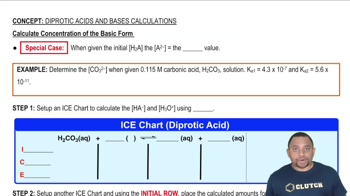Here are the essential concepts you must grasp in order to answer the question correctly.
Chemical Equilibrium
Chemical equilibrium occurs when the rates of the forward and reverse reactions are equal, resulting in constant concentrations of reactants and products. In this state, the system is dynamic, meaning that reactions continue to occur, but there is no net change in concentration. Understanding equilibrium is crucial for solving problems involving equilibrium constants (Kc) and concentrations.
Recommended video:
Chemical Equilibrium Concepts
Equilibrium Constant (Kc)
The equilibrium constant (Kc) quantifies the ratio of the concentrations of products to reactants at equilibrium for a given reaction at a specific temperature. It is expressed as Kc = [products]^[coefficients] / [reactants]^[coefficients]. A large Kc value, such as 7.9 * 10^4, indicates that at equilibrium, the concentration of products is much greater than that of reactants, guiding the calculation of unknown concentrations.
Recommended video:
Equilibrium Constant Expressions
Concentration Calculations
Concentration calculations involve determining the molarity of substances in a solution, which is essential for applying the equilibrium expression. In this problem, the concentrations of SO2 and O2 are provided, and using the Kc value, one can rearrange the equilibrium expression to solve for the unknown concentration of SO3. This requires an understanding of stoichiometry and the relationships between reactants and products.
Recommended video:
Calculate Concentration of the Basic Form




